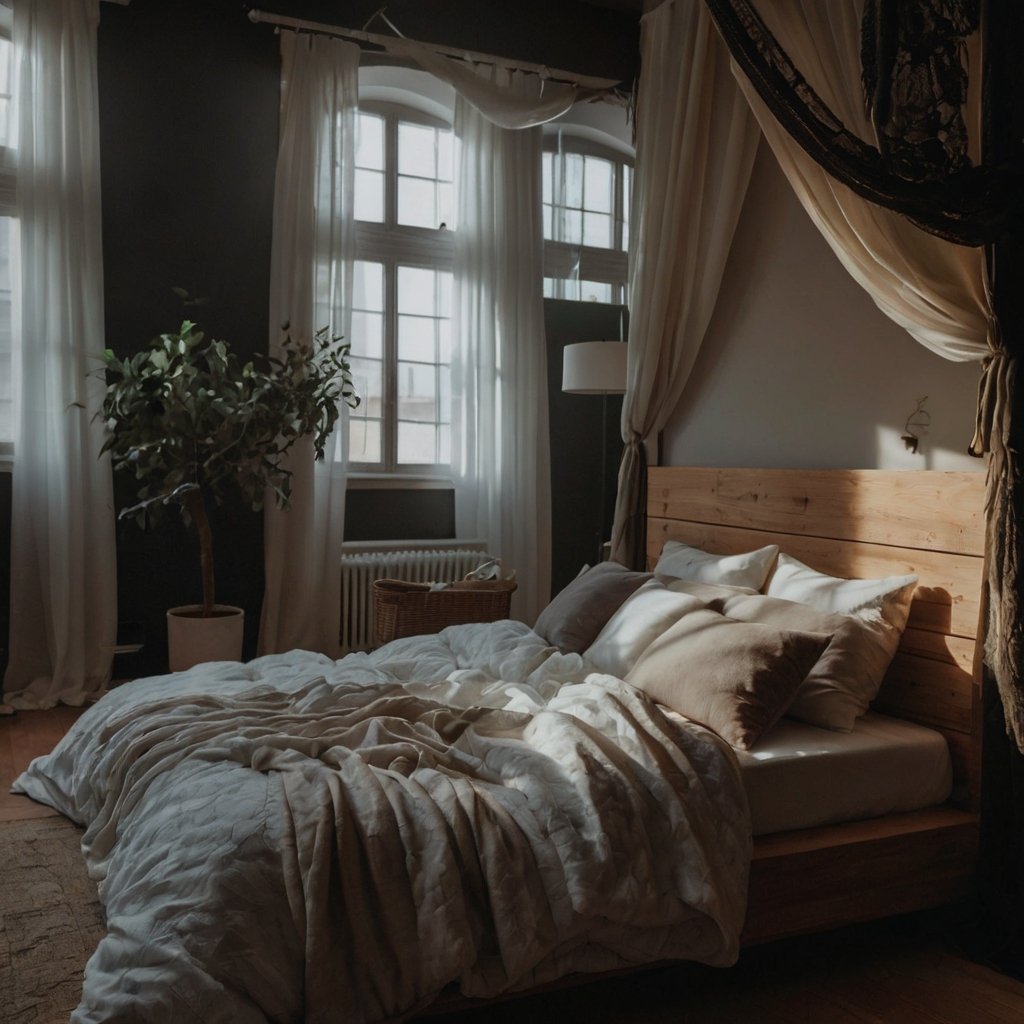Creating the ideal sleep environment is one of the most powerful — yet underrated — ways to improve your sleep quality. While many focus solely on how many hours they sleep, the quality of those hours is deeply impacted by your surroundings. Light, sound, temperature, air quality, and even your mattress can all play a role in how restful your night truly is.
In this article, we’ll explore how to optimize every element of your bedroom so you can fall asleep faster, stay asleep longer, and wake up feeling genuinely refreshed.
1. Control the Light for Better Melatonin Production
Light is one of the strongest signals for your circadian rhythm — your body’s internal clock. When your bedroom is bright, your brain may think it’s daytime and delay the release of melatonin, the sleep hormone.
Tips:
- Use blackout curtains: These block outside light from street lamps or early sunrises.
- Avoid screens before bed: Phones, tablets, and TVs emit blue light, which tricks your brain into staying alert.
- Try dim, warm lighting: In the evening, switch to lamps with warm-colored bulbs to signal it’s time to wind down.
2. Optimize the Temperature for Comfort
Most sleep experts agree that a slightly cool room promotes better sleep. A temperature between 60°F and 67°F (15°C and 19°C) is considered optimal for most people.
Tips:
- Use breathable bedding: Natural fabrics like cotton or bamboo allow airflow.
- Consider a cooling mattress: Some memory foam mattresses trap heat — newer models are designed for better temperature regulation.
- Use a fan or white noise machine: These can help circulate air and create a consistent background sound.
3. Eliminate Distractions and Clutter
A cluttered bedroom can create subconscious stress, even if you’re not fully aware of it. The bedroom should be a sanctuary, not a workspace or entertainment center.
Tips:
- Keep your bedroom only for sleep and intimacy: Avoid using your bed for watching TV or working.
- Declutter surfaces: Keep nightstands and dressers simple and organized.
- Minimize decorations: Choose calming colors and minimalist designs.
4. Invest in a Quality Mattress and Pillow
A mattress that’s too old, too soft, or too firm can cause physical discomfort that disrupts your sleep. The same goes for pillows — if your neck isn’t supported properly, you may toss and turn or wake up with pain.
Tips:
- Replace mattresses every 7–10 years: Consider your sleep position and any health needs.
- Use adjustable pillows: Some offer customizable firmness for different sleeping styles.
- Try mattress toppers: These can temporarily improve comfort without the cost of a new mattress.
5. Reduce Noise as Much as Possible
Noises like traffic, barking dogs, or even your partner snoring can interrupt deep sleep cycles. Sound disruptions don’t have to fully wake you to reduce sleep quality.
Tips:
- Use earplugs or a white noise machine: These can block or mask disruptive sounds.
- Seal windows and doors: Use weather stripping to reduce outdoor noise.
- Consider soft furnishings: Rugs, curtains, and upholstered furniture can absorb sound.
6. Improve Air Quality and Scent
Fresh air and pleasant aromas can promote relaxation, while stuffy rooms may make you feel uneasy and irritable.
Tips:
- Use an air purifier: Especially helpful if you live in a polluted city or have allergies.
- Keep plants in the room: Plants like snake plants and peace lilies naturally purify the air.
- Try aromatherapy: Scents like lavender, chamomile, and sandalwood are known to encourage sleep.
7. Keep Electronics Out of the Bedroom
Electronics are double trouble: they emit blue light and they can distract you with notifications or stress-inducing content.
Tips:
- Charge devices outside the room: Use a basic alarm clock instead of your phone.
- Use “Do Not Disturb” mode: If you must keep your phone nearby, silence notifications overnight.
- Avoid watching TV in bed: Instead, opt for reading or gentle stretches to wind down.
8. Incorporate Calming Colors and Textures
Your brain responds to visual cues. Calm, cool tones are more likely to relax your mind than bold, stimulating colors.
Tips:
- Use soft shades: Blues, greys, greens, and off-whites are great choices.
- Layer textures: Combine soft blankets, plush rugs, and smooth sheets for a cozy feel.
- Avoid bright reds or neon tones: These colors can feel energizing rather than calming.
9. Create a Consistent Pre-Bed Ritual
A consistent routine tells your body it’s time to sleep. While this overlaps with your physical environment, the habits you form in this space also contribute to its effectiveness.
Tips:
- Follow the same bedtime routine: Try showering, skincare, and reading every night.
- Go to bed and wake up at the same time: Even on weekends, for best results.
- Limit food and alcohol late at night: Heavy meals or drinks before bed can disturb your rest.
10. Consider Sleep Gadgets and Tools
Many people find success with tools designed specifically to improve sleep, from weighted blankets to sleep masks.
Popular tools:
- Weighted blankets: Mimic the feeling of being hugged and reduce anxiety.
- Sleep masks: Block out light effectively and are travel-friendly.
- Smart lighting: Lights that adjust their brightness and temperature based on the time of day.
Waking Up Refreshed: The Power of Your Sleep Space
When you create an environment designed for sleep, you send your brain and body the signal that it’s time to shut down, recharge, and recover. You don’t need to spend a fortune — small changes can have a huge impact. Whether it’s investing in blackout curtains, getting a better pillow, or simply decluttering, each step brings you closer to restful, uninterrupted sleep.
Creating the perfect sleep environment is not a luxury — it’s a foundational step toward a healthier, more energetic life. Try implementing a few of these suggestions this week, and pay attention to how your body responds. You might be surprised at how quickly better sleep transforms your days.
